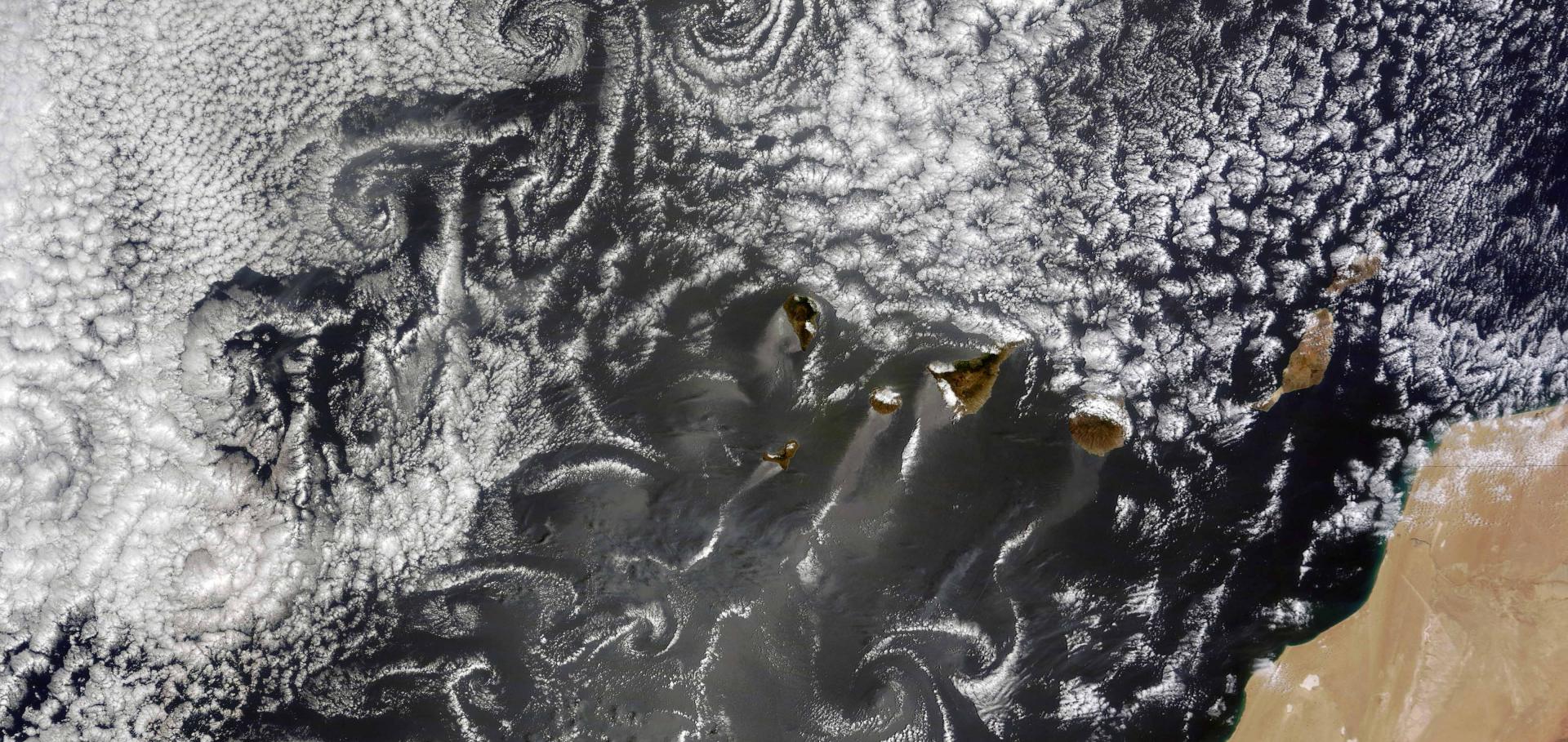Evaluation of global simulations of aerosol particle and cloud condensation nuclei number, with implications for cloud droplet formation
Atmospheric Chemistry and Physics Copernicus GmbH 19:13 (2019) 8591-8617
Authors:
George S Fanourgakis, Maria Kanakidou, Athanasios Nenes, Susanne E Bauer, Tommi Bergman, Ken S Carslaw, Alf Grini, Douglas S Hamilton, Jill S Johnson, Vlassis A Karydis, Alf Kirkevåg, John K Kodros, Ulrike Lohmann, Gan Luo, Risto Makkonen, Hitoshi Matsui, David Neubauer, Jeffrey R Pierce, Julia Schmale, Philip Stier, Kostas Tsigaridis, Twan van Noije, Hailong Wang, Duncan Watson-Parris, Daniel M Westervelt, Yang Yang, Masaru Yoshioka, Nikos Daskalakis, Stefano Decesari, Martin Gysel-Beer, Nikos Kalivitis, Xiaohong Liu, Natalie M Mahowald, Stelios Myriokefalitakis, Roland Schrödner, Maria Sfakianaki, Alexandra P Tsimpidi, Mingxuan Wu, Fangqun Yu
Abstract:
<p><strong>Abstract.</strong> A total of 16 global chemistry transport models and
general circulation models have participated in this study; 14 models
have been evaluated with regard to their ability to reproduce the near-surface
observed number concentration of aerosol particles and cloud condensation
nuclei (CCN), as well as derived cloud droplet number concentration (CDNC). Model
results for the period 2011–2015 are compared with aerosol measurements
(aerosol particle number, CCN and aerosol particle composition in the
submicron fraction) from nine surface stations located in Europe and Japan.
The evaluation focuses on the ability of models to simulate the average
across time state in diverse environments and on the seasonal and
short-term variability in the aerosol properties.</p> <p>There is no single model that systematically performs best across all
environments represented by the observations. Models tend to underestimate
the observed aerosol particle and CCN number concentrations, with average
normalized mean bias (NMB) of all models and for all stations, where data
are available, of <span class="inline-formula">−24</span>&thinsp;% and <span class="inline-formula">−35</span>&thinsp;% for particles with dry diameters <span class="inline-formula">&gt;50</span> and <span class="inline-formula">&gt;120</span>&thinsp;nm, as well as <span class="inline-formula">−36</span>&thinsp;% and <span class="inline-formula">−34</span>&thinsp;% for CCN
at supersaturations of 0.2&thinsp;% and 1.0&thinsp;%, respectively. However, they seem to behave differently for particles activating at very low supersaturations (<span class="inline-formula">&lt;0.1</span>&thinsp;%) than at higher ones. A total of 15 models have been used to produce ensemble annual median distributions of relevant parameters. The
model diversity (defined as the ratio of standard deviation to mean) is up
to about 3 for simulated <span class="inline-formula">N<sub>3</sub></span> (number concentration of particles with dry
diameters larger than 3&thinsp;nm) and up to about 1 for simulated CCN in the
extra-polar regions. A global mean reduction of a factor of about 2 is found
in the model diversity for CCN at a supersaturation of <span class="inline-formula">0.2</span>&thinsp;% (CCN<span class="inline-formula"><sub>0.2</sub></span>) compared to that for <span class="inline-formula">N<sub>3</sub></span>,
maximizing over regions where new particle formation is important.</p> <p>An additional model has been used to investigate potential causes of model
diversity in CCN and bias compared to the observations by performing a
perturbed parameter ensemble (PPE) accounting for uncertainties in 26
aerosol-related model input parameters. This PPE suggests that biogenic
secondary organic aerosol formation and the hygroscopic properties of the
organic material are likely to be the major sources of CCN uncertainty in
summer, with dry deposition and cloud processing being dominant in winter.</p> <p>Models capture the relative amplitude of the seasonal variability of the aerosol
particle number concentration for all studied particle sizes with available
observations (dry diameters larger than 50, 80 and 120&thinsp;nm). The short-term
persistence time (on the order of a few days) of CCN concentrations, which
is a measure of aerosol dynamic behavior in the models, is underestimated on
average by the models by 40&thinsp;% during winter and 20&thinsp;% in summer.</p> <p>In contrast to the large spread in simulated aerosol particle and CCN number
concentrations, the CDNC derived from simulated CCN spectra is less diverse
and in better agreement with CDNC estimates consistently derived from the
observations (average NMB <span class="inline-formula">−13</span>&thinsp;% and <span class="inline-formula">−22</span>&thinsp;% for updraft velocities 0.3 and
0.6&thinsp;m&thinsp;s<span class="inline-formula"><sup>−1</sup></span>, respectively). In addition, simulated CDNC is in slightly
better agreement with observationally derived values at lower than at higher
updraft velocities (index of agreement 0.64 vs. 0.65). The reduced spread
of CDNC compared to that of CCN is attributed to the sublinear response of
CDNC to aerosol particle number variations and the negative correlation
between the sensitivities of CDNC to aerosol particle number concentration
(<span class="inline-formula"><math xmlns="http://www.w3.org/1998/Math/MathML" id="M15" display="inline" overflow="scroll" dspmath="mathml"><mrow><mo>∂</mo><msub><mi>N</mi><mi mathvariant="normal">d</mi></msub><mo>/</mo><mo>∂</mo><msub><mi>N</mi><mi mathvariant="normal">a</mi></msub></mrow></math><span><svg:svg xmlns:svg="http://www.w3.org/2000/svg" width="48pt" height="14pt" class="svg-formula" dspmath="mathimg" md5hash="9faa6b9bc700a00532091cfd69cae419"><svg:image xmlns:xlink="http://www.w3.org/1999/xlink" xlink:href="acp-19-8591-2019-ie00001.svg" width="48pt" height="14pt" src="acp-19-8591-2019-ie00001.png"/></svg:svg></span></span>) and to updraft velocity (<span class="inline-formula"><math xmlns="http://www.w3.org/1998/Math/MathML" id="M16" display="inline" overflow="scroll" dspmath="mathml"><mrow><mo>∂</mo><msub><mi>N</mi><mi mathvariant="normal">d</mi></msub><mo>/</mo><mo>∂</mo><mi>w</mi></mrow></math><span><svg:svg xmlns:svg="http://www.w3.org/2000/svg" width="43pt" height="14pt" class="svg-formula" dspmath="mathimg" md5hash="9a0c289e263af38b17f8d2715a056c8f"><svg:image xmlns:xlink="http://www.w3.org/1999/xlink" xlink:href="acp-19-8591-2019-ie00002.svg" width="43pt" height="14pt" src="acp-19-8591-2019-ie00002.png"/></svg:svg></span></span>). Overall, we find that while
CCN is controlled by both aerosol particle number and composition, CDNC is
sensitive to CCN at low and moderate CCN concentrations and to the updraft
velocity when CCN levels are high. Discrepancies are found in sensitivities
<span class="inline-formula"><math xmlns="http://www.w3.org/1998/Math/MathML" id="M17" display="inline" overflow="scroll" dspmath="mathml"><mrow><mo>∂</mo><msub><mi>N</mi><mi mathvariant="normal">d</mi></msub><mo>/</mo><mo>∂</mo><msub><mi>N</mi><mi mathvariant="normal">a</mi></msub></mrow></math><span><svg:svg xmlns:svg="http://www.w3.org/2000/svg" width="48pt" height="14pt" class="svg-formula" dspmath="mathimg" md5hash="a47c1357bf9f8959859c5d28931197ed"><svg:image xmlns:xlink="http://www.w3.org/1999/xlink" xlink:href="acp-19-8591-2019-ie00003.svg" width="48pt" height="14pt" src="acp-19-8591-2019-ie00003.png"/></svg:svg></span></span> and <span class="inline-formula"><math xmlns="http://www.w3.org/1998/Math/MathML" id="M18" display="inline" overflow="scroll" dspmath="mathml"><mrow><mo>∂</mo><msub><mi>N</mi><mi mathvariant="normal">d</mi></msub><mo>/</mo><mo>∂</mo><mi>w</mi></mrow></math><span><svg:svg xmlns:svg="http://www.w3.org/2000/svg" width="43pt" height="14pt" class="svg-formula" dspmath="mathimg" md5hash="2e76a96aacff9b259f027c6bf554be27"><svg:image xmlns:xlink="http://www.w3.org/1999/xlink" xlink:href="acp-19-8591-2019-ie00004.svg" width="43pt" height="14pt" src="acp-19-8591-2019-ie00004.png"/></svg:svg></span></span>; models may be predisposed to be too
“aerosol sensitive” or “aerosol insensitive” in aerosol–cloud–climate
interaction studies, even if they may capture average droplet numbers well.
This is a subtle but profound finding that only the sensitivities can
clearly reveal and may explain inter-model biases on the aerosol indirect
effect.</p>


